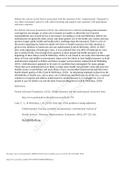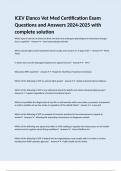Samenvatting
grade 8.5 - short, comprehensive summary for clinical health psychology in medical science
If all big summaries for this course seem a bit daunting, or if you're just running out of time, here's the perfect summary for you! I scored an 8.5 on the exam with just this summary, which contains all important information as provided in the lectures. Good luck studying!
[Meer zien]













